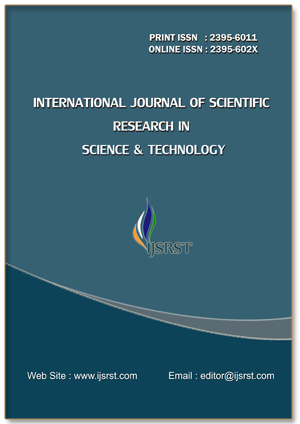Status Review of the Mangroves Forest in India
DOI:
https://doi.org/10.32628/IJSRST25123230Keywords:
Mangroves, coastal, biodiversity, carbon -sinkAbstract
Mangroves, are woody salt tolerant halophytes. They are highly productive economic bio-resources. The mangroves ecosystem currently represent less than 1% of the global tropical forest area. They supports a variety of organism both in coastal and marine ecosystems. They provide essential breeding grounds for many aquatic animal species, crustaceans, amphibian and mammals. They act as carbon sink that provide protection against more carbon, contamination and coastal erosion. Many genera depend on mangrove for their survival. Mangroves offers a wide range of ecosystem services and commercially valuable products. Over the past 50 years, this unique ecosystem has been threatened by a variety of natural causes and anthropogenic pressure. Natural causes of mangrove forest degradation are the changes in hydrology, natural disasters, global warming, climate change, and coral reef destruction. They face threats due to habitat loss, expansion of aquaculture, pollution, timber loss. The extinction and loss of biological diversity is another challenge in the mangrove forest. India continuously loosing mangrove area and about 40% mangrove area has disappear in the last century due to anthropogenic pressure. Therefore, it is essential to assess the status and trends of mangroves in India. The mangrove forest areas are promising, but using all these areas requires some challenges to answer.
📊 Article Downloads
References
Barbier EB (2015) Valuing the storm protection service of estuarine and coastal ecosystems Ecosystem services11:32-38.
Uddin MS, et al. (2013) Economic valuation of provisioning and cultural services of a protected mangrove ecosystem: A case study on Sundarbans Reserve Forest, Bangladesh. Ecosystem Services 1;5: 88-93.
Yudha RP et al. (2021) Impact of logging on the biodiversity and composition of flora and fauna in the mangrove forests of Bintuni Bay, West Papua, Indonesia. Forest Ecology and Management, 488:119038.
Wang YS and Gu JD (2021) Ecological responses, adaptation and mechanisms of mangrove wetland ecosystem to global climate change and anthropogenic activities. International Biodeterioration & Biodegradation, 162:105248.
Sahu SK and Kathiresan K (2019) The age and species composition of mangrove forest directly influence the net primary productivity and carbon sequestration potential. Biocatalysis and Agricultural Biotechnology, 20: 101235.
Spurgeon J (1999) The socio-economic costs and benefits of coastal habitat rehabilitation and creation. Marine Pollution Bulletin, 1; 37 (8-12):373-382.
Bera R and Mati R (2022) Mangrove dependency and livelihood challenges - a study on Sundarbans, India. Regional Studies in Marine Science, 50: 102135.
Aheto DW et al., (2016) Community-based mangrove forest management: implications for local livelihoods and coastal resource conservation along the Volta estuary catchment area of Ghana. Ocean & Coastal Management 127: 43-54.
Vinoth R et al., (2019) Anatomical and physiological adaptation of mangrove wetlands in east coast of Tamil Nadu. World Scientific News, 129:43-54.
Friess DA et al., (2019) The state of the world's mangrove forests: past, present, and future Annual Review Environment and. Resource, 17; 44(1):89-115.
Sahu SC et al., (2013) Floral and microbial dynamics in relation to the physico-chemical constituents of the Devi estuary of Odisha coast of tha Bay of Bengal, India. Indian Journal of Geo-Marine Sciences 42: 90-96
Govt. of India (1987) Mangrove in India. Status Report, Ministry of Environment & Forest, Govt. of India, pp. 1-150.
Kumar R (2000) Distribution of mangroves in Goa. Indian Journal of Forestry 23: 360-365.
IFSR (Indian State of Forest Report) Vol I. (2023). Forest Survey of India. Ministry of Environment, Forest and Climate Change. Dehradun, Uttarakhand, India. Pp 1-321.
IUCN (International Union for Conservation of Nature). (2019). The IUCN Red List of Threatened Species.
Macintosh, D. J., Suárez, E. L., Aung, T., Friess, D. A., Nightingale, M., & Valderrábano, M. (2023). IUCN Red List of Ecosystems
Downloads
Published
Issue
Section
License
Copyright (c) 2025 International Journal of Scientific Research in Science and Technology

This work is licensed under a Creative Commons Attribution 4.0 International License.
https://creativecommons.org/licenses/by/4.0




